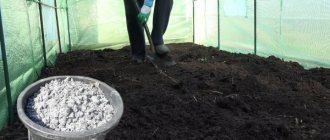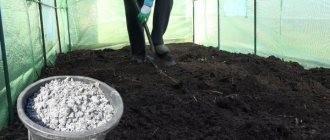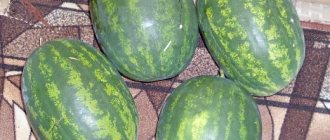Growing watermelons in open ground is possible even in the unstable climate of the middle zone. And we have seen this from our own experience. In order not to be unfounded, we will tell and show how to grow delicious watermelons in the country.
Several years ago, my parents already tried to grow a heat-loving melon crop, but the first experiment was not successful: the fruits did not have time to ripen and turned out to be tasteless. Perhaps the main mistake was choosing the wrong variety. Now we have taken this matter more responsibly and taken into account the advice of experienced gardeners.
Growing conditions
It is not easy to grow watermelons in temperate climates. The area of their problem-free cultivation begins approximately in the southern regions of the Saratov region (Rivne watermelons are well known) or the Volgograd region (Kamyshin watermelons). After all, the birthplace of watermelon is Africa. Therefore, it becomes clear that this crop does not need moisture as much as high temperature: it is a heat-resistant plant. In addition, the melon must be constantly illuminated by the sun: it is impossible to grow sweet berries even in partial shade.
At the same time, watermelon tolerates cold weather well if it does not reach frost and does not last for a long time. He is not picky about the composition of the soil. It feels best on light sandy loam with a pH of 6.5–7, and responds well to organic fertilizers. Watermelon roots penetrate deeply and obtain their own moisture, but with additional artificial irrigation during plant development and fruit growth, the yield increases significantly.
Watermelon bushes are small in appearance, but the feeding area required is significant, and this must be taken into account when choosing a bed. Dense plantings are unacceptable; there should be at least 70 cm between plants. It is optimal if in the middle zone it grows on a small hill: excess water accumulating in the lowlands has a detrimental effect on the roots, causing them to rot, especially in cool weather.
Watermelons need a lot of space
If the soil on the site is clayey, it is advisable to add sand during autumn digging, and if it is too acidic, add chalk or dolomite flour. The amount depends on the severity of the situation: sand can be up to a bucket per 1 m2, chalk - one or two handfuls. As a fertilizer, it is best to take a bucket of good compost or humus, but not fresh manure. In the spring, during the final preparation of the bed with a cultivator or rake, add a liter jar of wood ash and 30–40 g of superphosphate per 1 m2. Watermelon also responds well to small additions of magnesium fertilizers (about 5 g per 1 m2).
It is better if the watermelon is planted after cabbage, peas, onions or garlic; it should not be planted after nightshades (tomatoes, potatoes, peppers, eggplants). For more than two seasons in a row, they try not to place watermelons in one place.
What varieties of watermelons should be planted in different regions?
For Siberia and the Urals:
- Cinderella;
- Siberian;
- Siberian lights;
- Sugar Baby;
- Ultra early;
- Astrakhan.
For the Moscow region:
- Crimson Suite;
- Skorik;
- Light;
- Top Gun;
- Chill;
- Sugar baby.
For Ukraine and southern Russia:
- Producer;
- Light;
- Top Gun F1;
- Sugar Baby;
- Skorik;
- A gift from the sun;
- Astrakhan.
For Bashkiria and the middle zone:
- Watermelon is chilly;
- Charleston Gray;
- Light;
- Photon;
- Spring;
- Leader;
- Suga Baby.
Where to buy seeds:
Growing watermelons by sowing seeds in a garden bed
Watermelon seeds germinate at a minimum temperature of 16°C, plants die at 0°C. Therefore, when planning to sow seeds in unprotected soil or in a greenhouse bed, you need to focus on these indicators. Sowing in open ground and in a greenhouse, as well as further care of plants in both of these cases are slightly different.
Sowing in open ground
When choosing a sowing time, it is worth remembering that not only the air must warm up well: at soil temperatures below 14°C, seeds germinate with great difficulty. Therefore, in the middle zone, sowing seeds, although it is possible somewhat earlier than planting seedlings, is carried out no earlier than May 25. By the time they hatch and sprout, the threat of frost will pass. But you shouldn’t sow sprouted seeds in the garden at this time: there is a high probability of their death in the event of a sudden cold snap. It is better to use dry seeds, and hatched ones - not earlier than summer.
The beds are prepared in the same way as for planting seedlings; holes are also prepared in the same places, adding local fertilizers. Only the holes with ash are buried back, and the seeds are buried in them to a depth of about 3 cm. As when growing seedlings, it is worth putting 2-3 seeds side by side. 5–6 days after germination, excess plants are removed.
Often in the middle zone they set up a “smart bed”: when digging, they add increased doses of organic matter and then cover it with a dark film, as a result of which the soil quickly warms up in the sun. In the right places, cuts are made in the film, where the seeds are sown (you can also plant seedlings). The film is left for the whole season, and at first the bed is also covered with spunbond.
Video: growing watermelons grafted onto a pumpkin in a smart garden bed
Sowing in a greenhouse
The beds in the greenhouse are prepared long before sowing the watermelons. And this applies not only to the absolute need to dig up the earth with fertilizers in the fall and remove all plant debris. Sometimes a complete replacement of the soil is required if any diseases are raging in the greenhouse.
It is recommended to sow any greens or radishes in the greenhouse before watermelons. They will almost have time to ripen by mid-May, when it is time to sow watermelons. If sowing is planned for earlier dates, then even in the greenhouse you need to prepare covering materials just in case.
The sowing pattern in the greenhouse is a little more compact; distances between plants of greater than 50 cm can rarely be allowed here. Many gardeners even sow the earliest varieties of watermelon two per hole, then directing the lashes of neighboring bushes in different directions. Because of the cramped conditions, they often set up trellises in the greenhouse, raising watermelon vines above the ground and tying first the shoots and then the emerging fruits to the supports.
The technique of sowing seeds in a greenhouse is no different from that in open ground.
Watermelon bushes are often alternated with melons or cucumbers. If the first option is absolutely logical, then with cucumbers the issue is controversial: they love moist air, and watermelons are accustomed to growing in dry conditions. However, such joint planting is possible, but in the future it will require reasonable regulation of temperature and humidity in the greenhouse.
Watermelon is grown on a trellis in a greenhouse
How to choose the right seeds
Due to the fact that watermelon is an atypical crop for the middle zone, it is necessary to select seeds with extreme caution.
Seeds of watermelon
Remember that only early-ripening varieties are suitable for such conditions, the growing season of which ranges from 70-90 days.
Watermelon varieties
And if we take into account that the seeds are sown for seedlings quite late (in the middle or end of April, as we have already found out), then it is quite obvious that watermelons should ripen even before the cold weather sets in. In addition, you can purchase seeds of hybrids that are more adapted to unfavorable climatic conditions.
Sowing watermelon and melon seeds for seedlings is almost identical
Only early ripening varieties with a growing season of about 70-90 days are suitable for cultivation in such conditions.
Prices for watermelon seeds
watermelon seeds
Planting care
Caring for melons is no more difficult than caring for any vegetables. True, in addition to the usual work (watering, loosening, fertilizing), the need to form bushes is also added. In open ground and greenhouses, the activities are similar, the nuances are minor.
Caring for watermelons in the open ground
Watering watermelons until fruit sets should be moderate, but the soil should always be slightly moist. Moisture is especially necessary during the period of intensive growth of leaf mass. It is necessary to water in the evening, with water heated in the sun, at the root. As the fruit grows, watering is significantly reduced and then stopped: while the berries are ripening, the soil is even dried out so that the watermelons absorb more sugars. While the leaves have not grown, after watering they loosen the soil, destroying weeds.
The first feeding is carried out 1.5 weeks after planting seedlings or 2–3 weeks after emergence. It is better to use organic matter and ash, or, as a last resort, mineral fertilizers strictly according to the instructions. Then they feed 1-2 more times, but without excess nitrogen, and stop feeding when the fruit begins to grow.
To feed watermelon it is better to use organic matter, but mineral fertilizers are also suitable
As the vines grow, they are laid out evenly across the bed, trying not to disturb them too much. Planks are placed under the fruits to prevent possible rotting in case of inclement weather.
Planks are placed under watermelons to prevent rotting.
The formation of the bush is aimed at preventing it from wasting its energy on growing excess green mass. The bulk of the incoming nutrients should go towards the formation and ripening of the crop. Excess ovaries are also removed, since even under the most optimal conditions the plant will not be able to provide adequate nutrition to everything that originated. Forming operations are carried out in sunny weather so that the sections dry out immediately and cannot rot.
Pruning and crop regulation are especially important for large-fruited varieties.
There are several options for forming bushes; the choice depends on many factors. In some cases, they try to grow crops on the central stem, removing side shoots as much as possible. In others, on the contrary, they almost immediately pinch the main shoot and grow fruits on the side shoots. For different varieties, certain approaches are preferable. The simplest way is as follows:
- leave no more than six fruits on the bushes, cutting off the excess ones when they reach the size of a chicken egg;
- Each shoot is guaranteed to produce only one fruit in the case of large-fruited varieties and two in the case of small-fruited varieties;
- After the fruit reaches the size of an average apple, no more than 4–5 leaves are left above it, and the rest of the shoot is cut off.
Even after the formation of the bush, during the filling of fruits, stepsons still appear from the axils of the leaves; they must be broken out immediately, trying not to injure the vines by turning them over.
All excess shoots must be broken out in time
Features of growing in a greenhouse
The basic approaches to growing watermelons in a greenhouse are the same as outside. True, you should carefully monitor the humidity and temperature conditions: it does not rain in the greenhouse, and it can overheat without ventilation. But, in addition to the usual events, you have to pay attention to two more points.
- Artificial pollination may be required. If the windows are mostly closed, there is no hope for pollination by insects. The owner himself must arm himself with a brush and, taking pollen from recently blossoming male flowers, carefully transfer it inside the female ones. Immediately after fertilization, fruit set and rapid growth begin, which can be helped by weekly feeding with small doses of complex fertilizers, or better yet, liquid solutions of mullein or bird droppings;
- In a greenhouse, watermelons are usually grown vertically, forming bushes while tying them to supports. The fruits do not lie on the ground, but hang in the air, and when they reach a critical mass they can fall and break. Therefore, berries the size of a fist are placed in soft nets made of any durable material, where they will grow. This way the fruits are evenly illuminated and pick up more sugar. The nets are tied to the trellis.
In the nets, watermelons are illuminated from all sides
The best melon varieties for the middle zone. Popular varieties of melons for central Russia
Cinderella
An early variety of melon, characterized by stable yield. On average, the weight of one fruit is 1500 g. Cinderella melons can be stored for two weeks.
Galia
This is a successful variety of netted melon native to Israel. The round or oval fruit weighs only about 1 kg. The pulp is white-green, slightly crunchy with sweetness and a unique aroma.
Fairy tale
An early hybrid of melons for central Russia, producing medium-sized fruits - 1500 g. The pulp is sweet and crunchy.
Galileo
A variety with medium ripening speed. The maximum fruit weight is 1500 g, the flesh is green and tender.
Assol
Another mid-season melon hybrid. Fruit weight - 1 kg, greenish flesh, dessert taste.
Assol is a popular melon variety
Scythian gold
Melons of this variety grow up to a maximum of 1500 g. In terms of taste, they are not inferior to southern fruits. Does not suffer from powdery mildew.
The Scythian Zlato variety deserves only a positive description from middle zone gardeners
Northern cantaloupe
The gray-skinned, orange-fleshed melon has nutmeg notes in its flavor. The fruits are miniature - 500-700 g. The variety is early ripening. Fruiting continues until the first frost.
Roksolana
An early ripe hybrid with the taste of the well-known and beloved Kolkhoznitsa. The white pulp of the fruit has a delicate texture and an abundance of juice. Melons grow large - 1500-2500 g, and are easy to transport.
Joker
A mid-ripening hybrid with orange skin and creamy flesh. In good sandy soil, the fruits grow quite large - up to 3 kg.
Caramel
An excellent early variety for central Russia, producing a good harvest under stressful conditions. The fruits weigh from 2 to 3 kg, have white pulp with a pronounced aroma and a miniature seed chamber.
Dessert
Yellow melon (with mesh), oval, 2000-2500 g. The yellow-green flesh is highly juicy and exudes a bright aroma. The variety is rated excellent for transportation and storage.
Passport
A variety of early ripeness with large fruits - up to 3500 g. The melon is easy to recognize not by its size, but also by its gray mesh on a yellow background. The pulp is white and, according to the description of “eyewitnesses,” it is extremely aromatic and juicy. The Passport variety easily tolerates transportation, frosts and fungal attacks.
Passport - an early ripening melon variety for central Russia
Dessert
Yellow melon (with mesh), oval, 2000-2500 g. The yellow-green flesh is highly juicy and exudes a bright aroma. The variety is rated excellent for transportation and storage.
Early
Naturally, this variety ripens early. The fruit is yellow up to 1500 g. It tolerates drought well and does not get sick. The edible part is very sweet and crumbly.
Harvest and storage
The watermelon harvest must be harvested on time: overripe fruits are not stored, and unripe ones are only suitable for pickling. Signs of ripeness are known to everyone, but often they do not work even in the hands of experienced melon growers: after all, until you cut the watermelon, you will not know exactly how ready it is.
When stored, watermelons almost never ripen: only when they are almost ready, they add a little sugar when cut.
Characteristic signs of ripeness of striped berries:
- the matte surface of the peel becomes shiny;
- the crust hardens and is not damaged by the nail;
- the stalk dries up;
- a yellow spot forms on the side touching the ground;
- When tapped, ripening watermelons make a ringing sound.
The berries are cut with pruning shears or a sharp knife, leaving a stalk up to 4–5 cm long. The fruits are transported to the storage location on a soft mat, carefully, without impacts. In storage they are placed in one layer and inspected from time to time. Optimal storage conditions are a temperature of about 7 ° C and a relative humidity of 70–85%. The shelf life of even the easiest varieties does not exceed 3 months.
Video: watermelon harvest in the middle zone
Growing watermelons in central Russia is a problem, but it is completely solvable. To do this, you need to choose the right variety, grow the seedlings in time and plant them in the garden. A watermelon will definitely grow in a greenhouse, but in natural light it will be much sweeter. But direct sowing of seeds in open ground in the middle zone is a lottery; the success of the event depends on how warm the summer turns out to be.
- Author: Semyon Vladimirov
Rate this article:
- 5
- 4
- 3
- 2
- 1
(2 votes, average: 5 out of 5)
Share with your friends!
Method two. Using peat pots
This method is good because such pots, as well as peat tablets, already contain the nutrients necessary for plants. As for the timing of sowing and preparation of seed, in this case they are the same as in the previous method.
Peat pots for seedlings
For the convenience of users, instructions for sowing watermelon seeds are given in table form.
Table. Sowing watermelon seeds for seedlings in peat pots.
| Steps, photo | Description of actions |
| Step one | First, prepare the soil mixture according to one of the recipes described above. Mix all ingredients thoroughly. |
| Step two | Prepare and germinate watermelon seeds (no changes here either). When the root is long enough, that is, it grows to 1-1.5 cm, proceed directly to sowing. |
| Step three | Take peat pots of the diameter indicated above, fill them with pre-prepared substrate to about 3⁄4. Then place the sprouted seeds in the pots. |
| Step four | Sprinkle the crops with a layer of soil mixture about 2-3 cm thick. Lightly compact, otherwise the seeds may become exposed during watering. |
| Step five | Water the crops carefully. We advise you to place peat pots in plastic containers of suitable dimensions - this way the walls will not dry out too quickly, remaining permanently wet. |
Prices for peat pots
peat pots
Regulating humidity
Watermelon Start
Young plants consume a lot of water, up to 200 ml per day. They need to be watered abundantly, but not more than once a week - this stimulates root growth. In addition, the soil should be loosened 3-4 times per season to a depth of 10 cm, while removing weeds. When the female flowers open, watermelons are watered half as often, and when the fruits are formed, they stop giving water completely.
Film shelters are removed at the end of June. However, they are restored in rainy weather or at the end of August so that the plants do not suffer from dew and differences in night and day temperatures. Ventilate shelters regularly. To prevent drips, stretch gauze or non-woven material over the plants in greenhouses and greenhouses.











